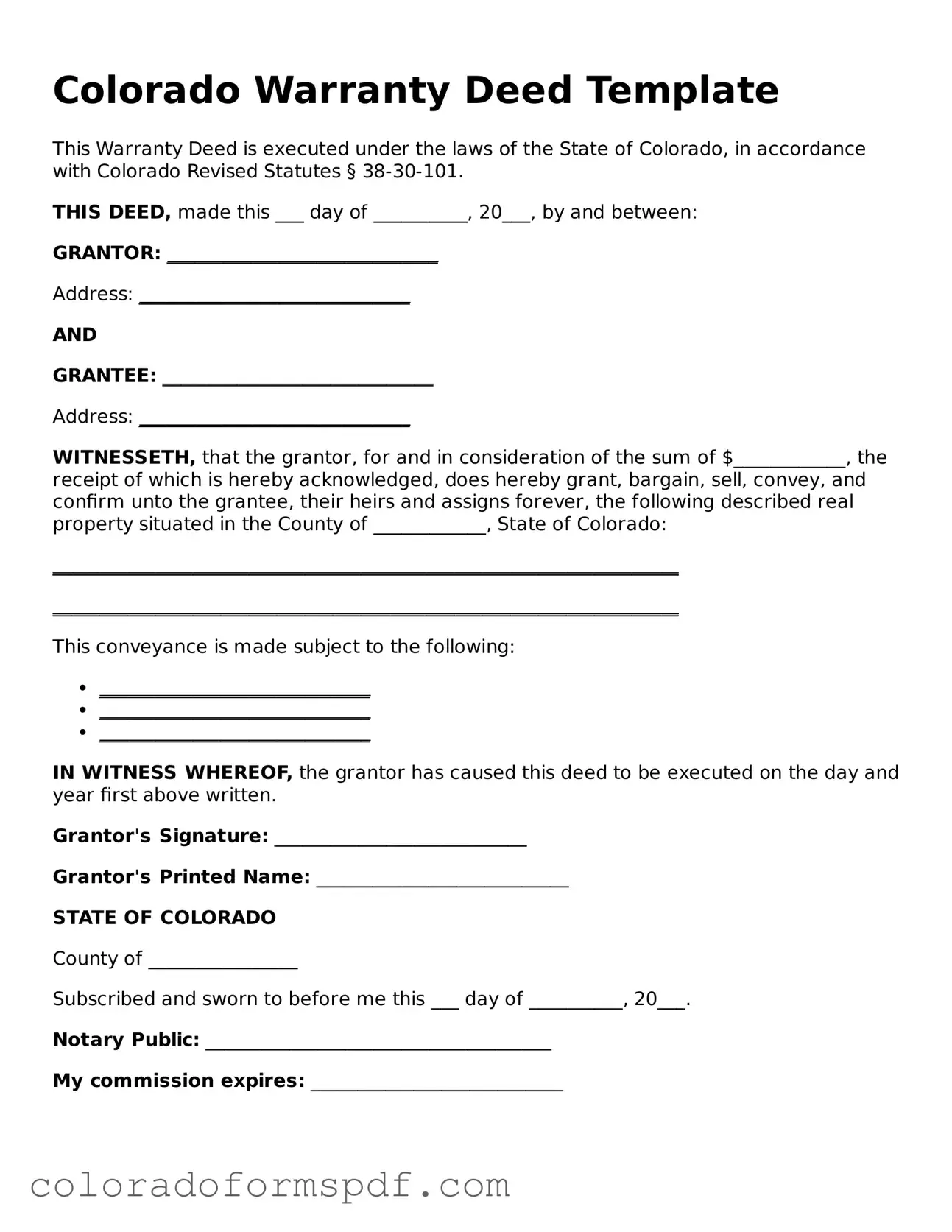Official Deed Template for Colorado State
A Colorado Deed form is a legal document that facilitates the transfer of property ownership from one party to another within the state of Colorado. This form plays a crucial role in real estate transactions, ensuring that the rights and responsibilities associated with the property are clearly defined. Understanding the nuances of this form can empower both buyers and sellers, making the property transfer process smoother and more transparent.
Get Document Online
